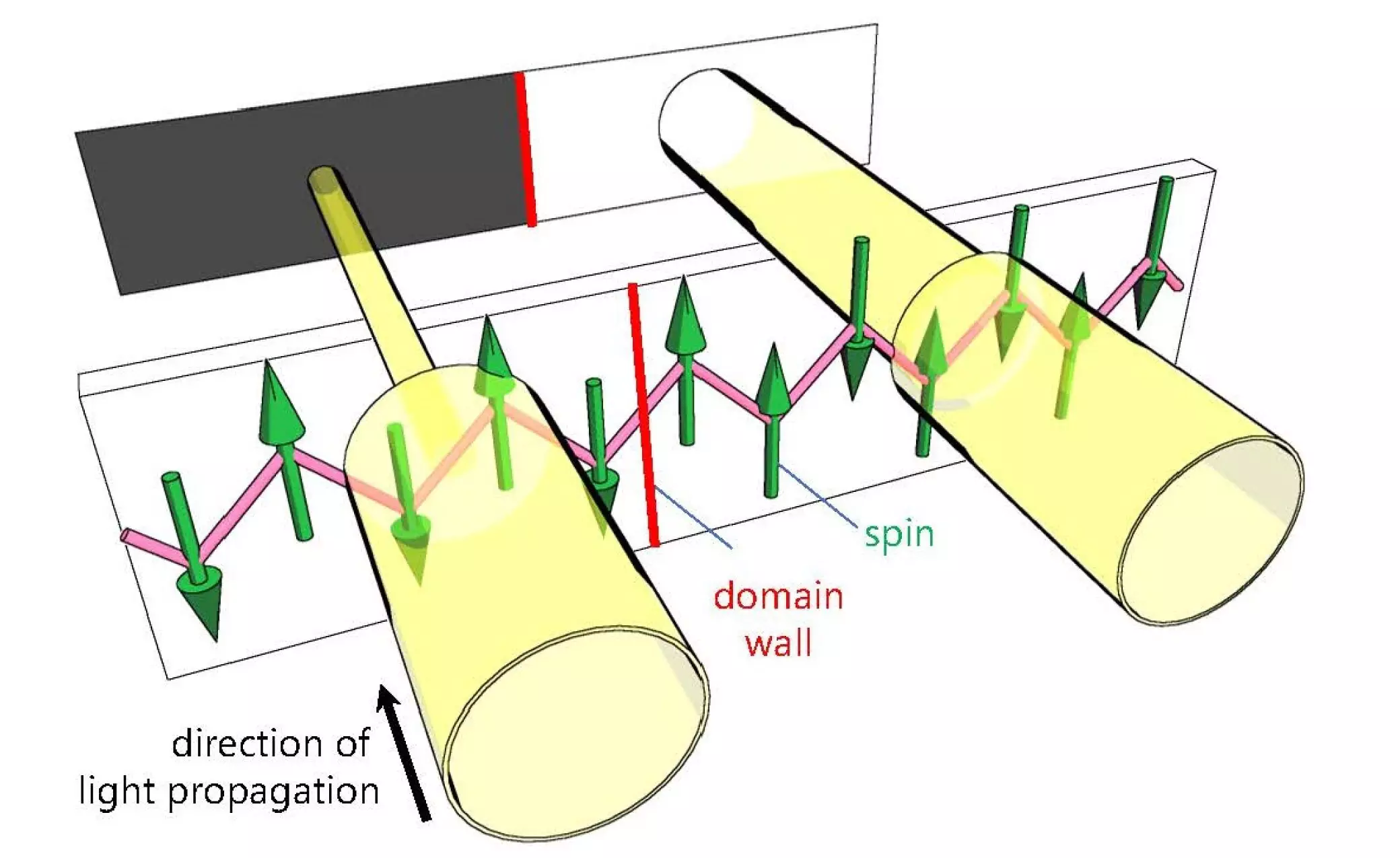The field of quantum magnetism continues to captivate scientists, particularly for its implications on advanced material science and technology. A significant breakthrough from researchers at Osaka Metropolitan University and the University of Tokyo sheds light on the intricate world of antiferromagnets, a specialized category of magnetic materials. This study, published in Physical Review Letters, explores visualizing magnetic domains within these unique substances and their manipulation through electric fields. The research not only enhances our understanding of quantum properties but also opens avenues for innovative technological applications.
Antiferromagnets differ fundamentally from everyday ferromagnets, which possess clearly defined north and south poles. Instead, antiferromagnets exhibit a unique characteristic where the magnetic spins are oriented in opposing directions, effectively canceling each other out to yield no net magnetic field. This can often make antiferromagnets less intuitive and more difficult to analyze. Nonetheless, their structure makes them particularly intriguing for next-generation electronics. Materials with quasi-one-dimensional characteristics, in which magnetic properties are confined along atomic chains, may drive substantial advancements in electronic devices and memory storage.
Despite their promise, the properties of antiferromagnets complicate their study. Traditional methods of magnetic domain observation often falter due to these materials’ low magnetic transition temperatures and diminutive magnetic moments. Kenta Kimura, an associate professor and the lead author of the study, acknowledged these challenges and emphasized the necessity for innovative approaches to observe and manipulate these compelling materials.
In their research, Kimura and his team focused on the quasi-one-dimensional quantum antiferromagnet BaCu2Si2O7. This material was examined using a novel technique known as nonreciprocal directional dichroism. This technique capitalizes on the phenomenon whereby light absorption differs based on the direction of light or the orientation of magnetic moments within the material. By harnessing this property, the team cleverly visualized magnetic domains within BaCu2Si2O7, illustrating the coexistence of opposing magnetic domains in individual crystals and the specific alignment of their domain walls along atomic chains.
Kimura’s excitement is palpable when discussing this achievement: “Seeing is believing, and understanding starts with direct observation.” The ability to visualize these magnetic domains is an essential breakthrough, as it paves the way for future investigations into quantum antiferromagnets that were hitherto challenging to study directly.
One of the key advancements from this study involves the ability to manipulate magnetic domain walls with an electric field. This phenomenon, termed magnetoelectric coupling, reveals a fascinating interplay between electric and magnetic properties. Interestingly, even when the domain walls were moved, they maintained their original orientation. Kimura articulated the prospects: “This optical microscopy method is straightforward and fast, potentially allowing real-time visualization of moving domain walls in the future.” Such an ability signifies a leap toward understanding and controlling magnetic materials within real-time frameworks.
The implications of Kimura’s work extend far beyond the immediate scientific community. By establishing a reliable method for observing and manipulating antiferromagnetic domains, researchers can delve deeper into the quantum fluctuations that influence these regions. This insight is crucial for the design of next-generation electronic devices that leverage antiferromagnetic materials, which may revolutionize our understanding of memory storage and computing efficiency.
Furthermore, the ability to manipulate magnetic domains dynamically could lead to advances in spintronic devices, which utilize the electron’s spin alongside its charge to create faster and more efficient data processing systems. The study fosters an exciting intersection between fundamental physics and practical application, promising a future where quantum materials play a central role in technological advancements.
The study by Osaka Metropolitan University and the University of Tokyo provides a critical leap forward in the understanding of antiferromagnetic materials. By employing innovative techniques to visualize and manipulate magnetic domains, researchers have illuminated a previously opaque field of quantum magnetism. As technology continuously evolves, the insights garnered from this research promise to guide the development of groundbreaking electronic devices and systems, ultimately enhancing the technical landscape of the future.


Leave a Reply